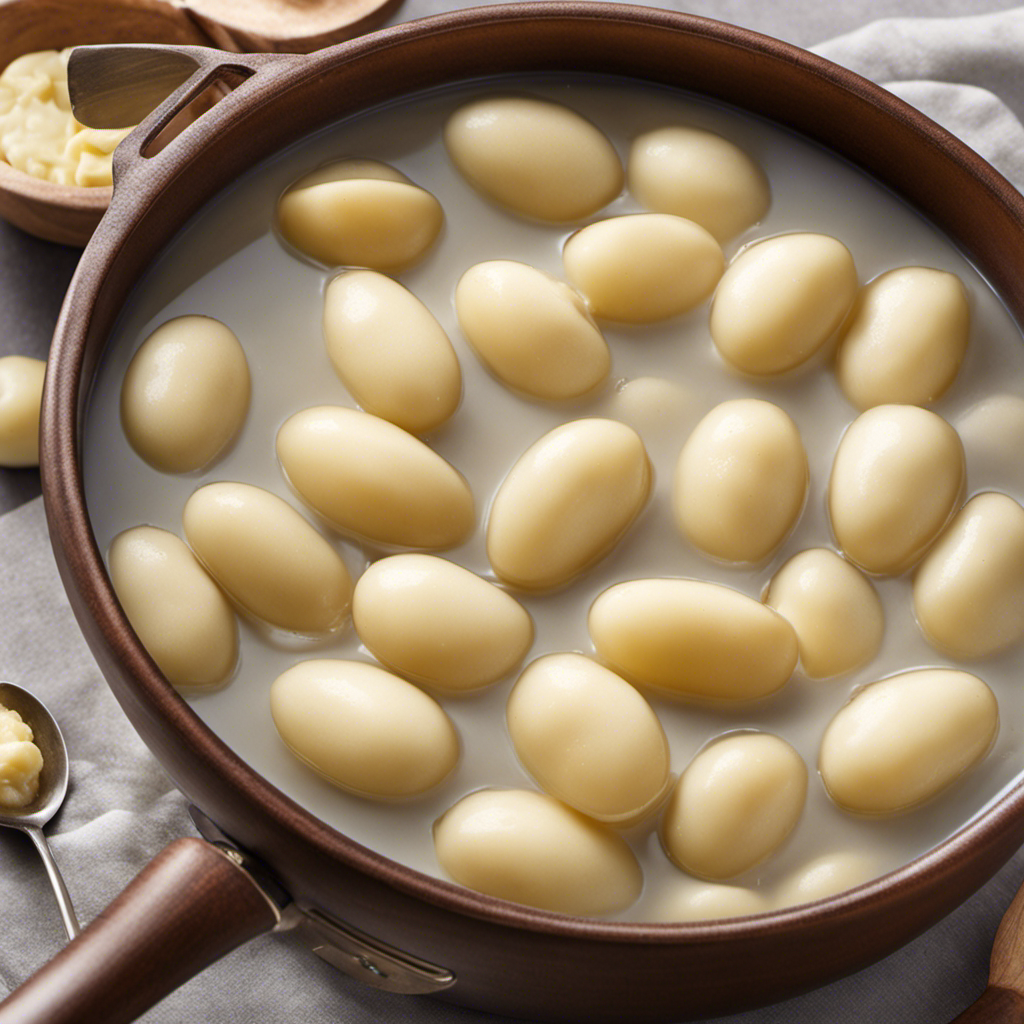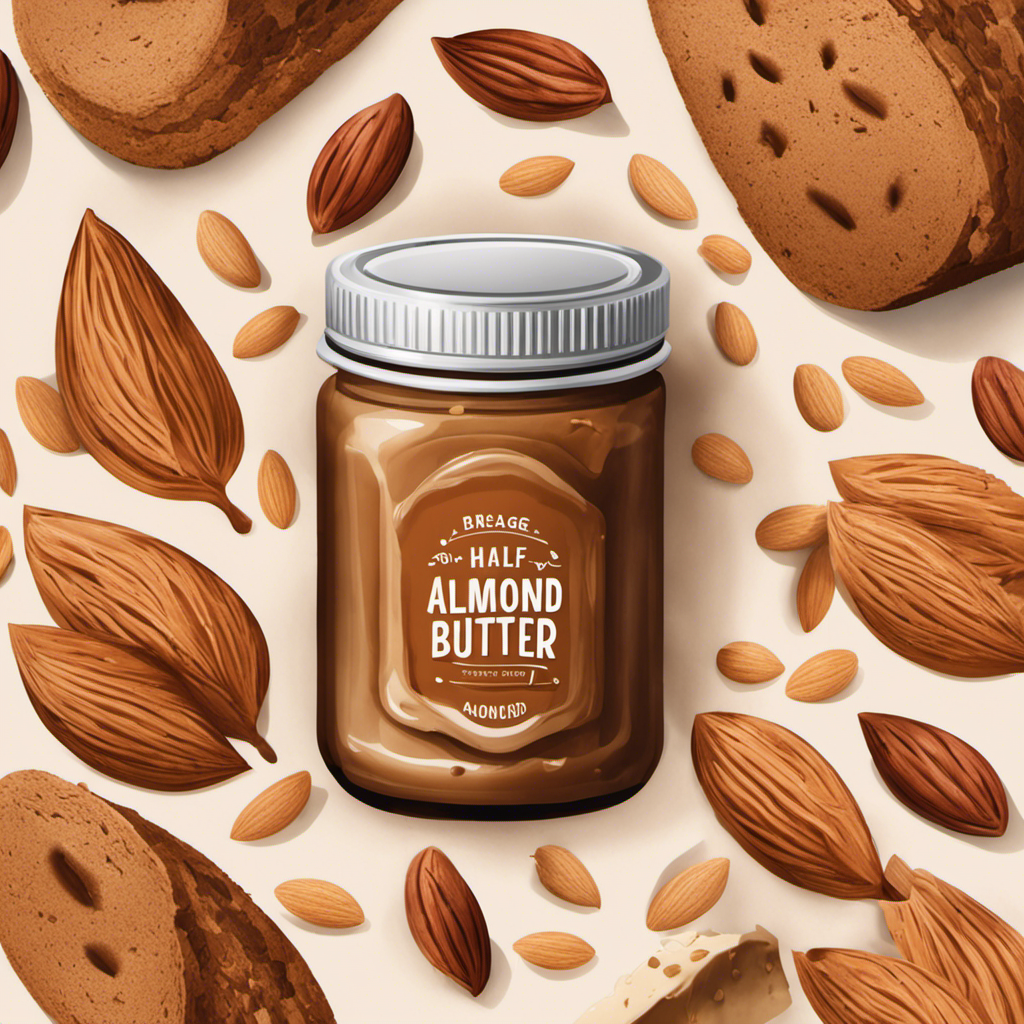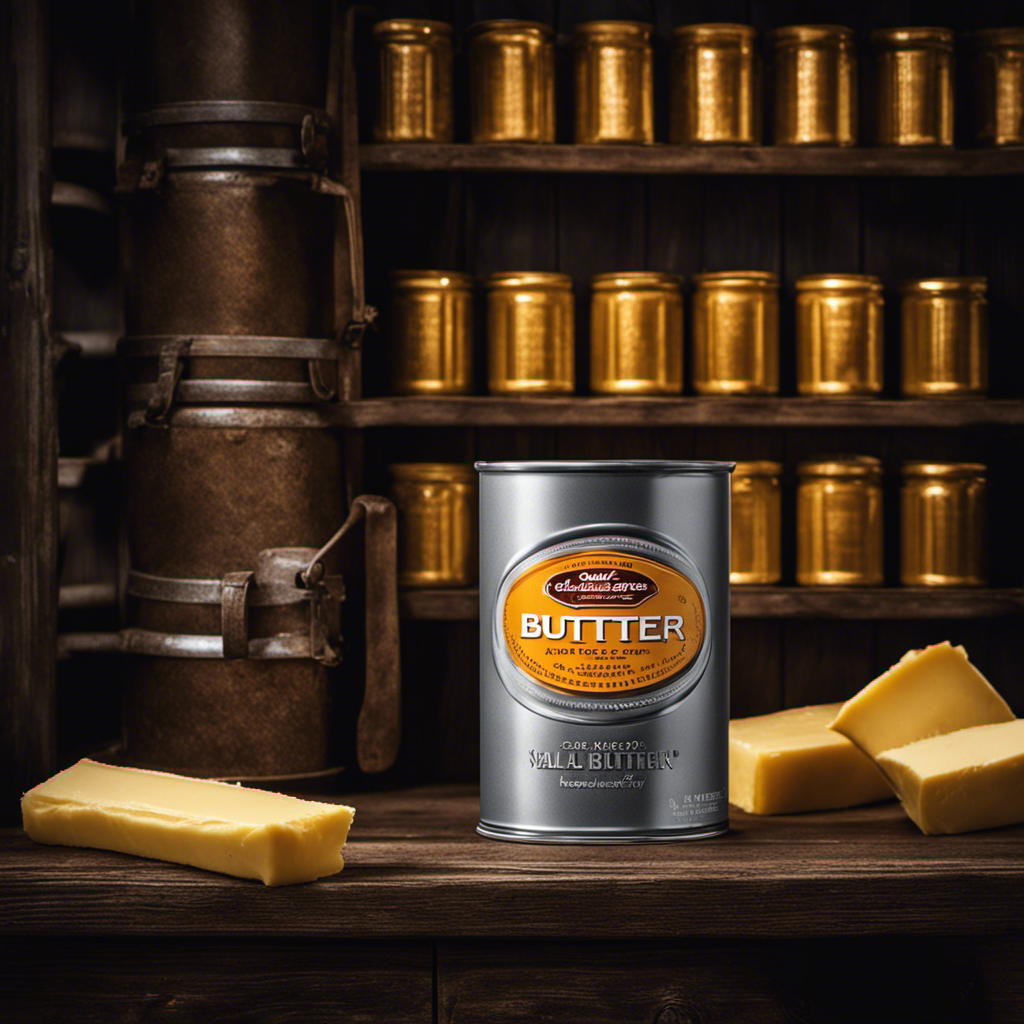I’ve experimented with numerous treatments, but none have been as successful as shea butter in diminishing my dark spots. It’s like a mystical elixir, producing remarkable results on my skin.
But the burning question remains: how long does it take for shea butter to remove these stubborn marks? In this article, we’ll delve into the science behind shea butter’s skin lightening properties and explore the factors that influence its effectiveness.
Get ready to discover the truth and finally bid farewell to those pesky dark spots.
Key Takeaways
- Shea butter is effective in fading dark spots on the skin.
- Consistent use of shea butter for at least 4-8 weeks is recommended for noticeable improvements.
- Results vary depending on the severity of dark spots and frequency of shea butter application.
- Shea butter should be used as part of a comprehensive skincare routine for optimal results.
Understanding the Benefits of Shea Butter for Dark Spots
I’ve learned that shea butter is known for its ability to help fade dark spots on the skin. When it comes to natural remedies for dark spots, shea butter stands out. Compared to other natural remedies like lemon juice or aloe vera, shea butter has been found to be more effective in reducing the appearance of dark spots.
This is because shea butter contains vitamins A and E, which help promote skin cell turnover and repair damaged skin. Additionally, shea butter also possesses anti-inflammatory properties that can help reduce redness and inflammation associated with dark spots.
However, it’s important to note that while shea butter is generally safe to use, it may cause allergic reactions in some individuals. It’s always a good idea to do a patch test before applying shea butter on your face or body to check for any adverse reactions.
The Science Behind Shea Butter’s Skin Lightening Properties
Using shea butter can help lighten the appearance of dark spots on the skin. Shea butter is rich in antioxidants, which play a crucial role in its ability to fade dark spots. Antioxidants help protect the skin from free radicals, which can contribute to the formation of dark spots. Shea butter also contains vitamins A and E, which promote overall skin health and help reduce the appearance of hyperpigmentation. Additionally, shea butter has moisturizing properties that can hydrate the skin and improve its texture.
To better understand the impact of shea butter on overall skin health and its role in fading dark spots, let’s take a look at the following table:
| Benefit | Antioxidant Content | Vitamins A and E |
|---|---|---|
| Fades Dark Spots | High | Yes |
| Promotes Skin Health | High | Yes |
| Hydrates and Improves Texture | Moderate | Yes |
As we can see, shea butter’s high antioxidant content and the presence of vitamins A and E make it an effective option for lightening dark spots and improving overall skin health.
Factors Affecting the Time It Takes for Shea Butter to Fade Dark Spots
The effectiveness of shea butter in fading dark spots can vary depending on various factors such as skin type, consistency of use, and the specific cause of the dark spots. Factors such as age, genetics, and the severity of the dark spots can also play a role in how long it takes for shea butter to show results.
Generally, it’s recommended to use shea butter consistently for at least 4-8 weeks to see noticeable improvements in the appearance of dark spots. However, it’s important to note that individual results may vary.
It’s also crucial to use shea butter as directed and to combine it with other skincare practices such as sun protection to achieve the best results within the expected timeframe.
Step-by-Step Guide to Using Shea Butter for Dark Spot Removal
To start, cleanse your face thoroughly with a gentle cleanser and pat it dry. Once your skin is clean, follow these steps to effectively use shea butter for dark spot removal:
-
Choose the right shea butter: Look for products that are 100% pure and unrefined. Some of the best shea butter brands include SheaMoisture, Now Solutions, and Sky Organics.
-
Apply shea butter to dark spots: Take a small amount of shea butter and warm it between your hands until it melts. Gently massage it onto the dark spots using circular motions. Leave it on overnight or for at least 30 minutes before rinsing it off.
-
Repeat regularly: Consistency is key when using shea butter for dark spot removal. Apply it daily or a few times a week to see the best results.
Realistic Expectations: How Long Before You See Results With Shea Butter
I can see visible results in my complexion when consistently applying high-quality shea butter. However, it’s important to have realistic expectations when it comes to how long it takes to see results.
One common misconception is that shea butter will instantly remove dark spots. While shea butter is known for its moisturizing and nourishing properties, it’s not a magical cure-all for dark spots. The time it takes to see results can vary depending on various factors, such as the severity of the dark spots and how often you use the shea butter.
Generally, it can take several weeks to a few months of consistent use to notice a significant improvement in the appearance of dark spots. Patience is key when using shea butter for dark spot removal, and it’s important to continue using it as part of a comprehensive skincare routine for best results.
Frequently Asked Questions
Can Shea Butter Be Used on All Skin Types to Remove Dark Spots?
Shea butter can be used on all skin types to remove dark spots. Its benefits lie in its natural moisturizing and healing properties. It’s rich in vitamins and fatty acids that help nourish the skin and promote cell regeneration.
However, its effectiveness may vary depending on the individual’s skin type and the severity of the dark spots. It’s always best to consult a dermatologist for personalized advice on treating dark spots.
Are There Any Side Effects or Risks Associated With Using Shea Butter for Dark Spot Removal?
Using shea butter for dark spot removal is generally safe and has minimal side effects. However, some individuals may experience mild irritation or allergic reactions. It’s always recommended to do a patch test before applying shea butter on a larger area of skin.
Additionally, shea butter shouldn’t be used as a substitute for medical treatment or professional advice. If you’ve any concerns or experience any adverse effects, it’s best to consult with a dermatologist.
Can Shea Butter Completely Remove All Types of Dark Spots?
Using shea butter for dark spot removal can be effective on various types of hyperpigmentation. However, it’s important to note that shea butter may have limitations as a standalone treatment.
While it can help lighten dark spots over time, the duration of its effects may vary depending on individual factors. It’s best to incorporate shea butter into a comprehensive skincare routine that includes other targeted treatments and sun protection for optimal results.
Does Shea Butter Work Better When Used Alone or in Combination With Other Skincare Products?
Shea butter is a versatile skincare ingredient that can be used alone or in combination with other products.
When it comes to acne, shea butter can be beneficial due to its anti-inflammatory properties. It can help soothe and heal the skin, reducing redness and irritation.
Additionally, shea butter is known for its anti-aging benefits. It can help improve the appearance of fine lines and wrinkles, promoting a more youthful complexion.
Can Shea Butter Be Used on Other Parts of the Body to Lighten Dark Spots, or Is It Only Effective on the Face?
Using shea butter on other body parts for dark spot removal is a common practice. Many people wonder if it’s as effective on the face as it’s on other areas.
From my experience, shea butter is effective on all skin types and can be used on any part of the body to lighten dark spots. It’s a natural ingredient that helps to moisturize and nourish the skin, promoting a more even complexion.
Conclusion
In conclusion, shea butter can be an effective remedy for fading dark spots on the skin. While the time it takes to see results may vary depending on factors such as the severity of the dark spots and individual skin characteristics, consistent use of shea butter can lead to noticeable improvements over time.
It’s important to have realistic expectations and understand that results may not be instant. However, with patience and regular application, shea butter can be a valuable addition to your skincare routine.










